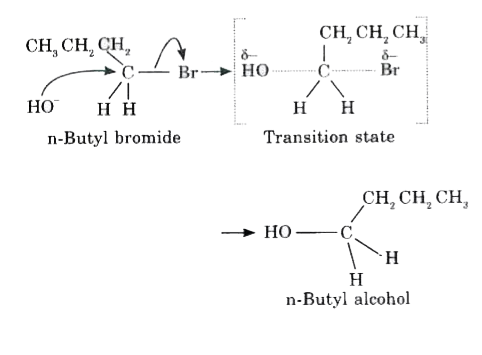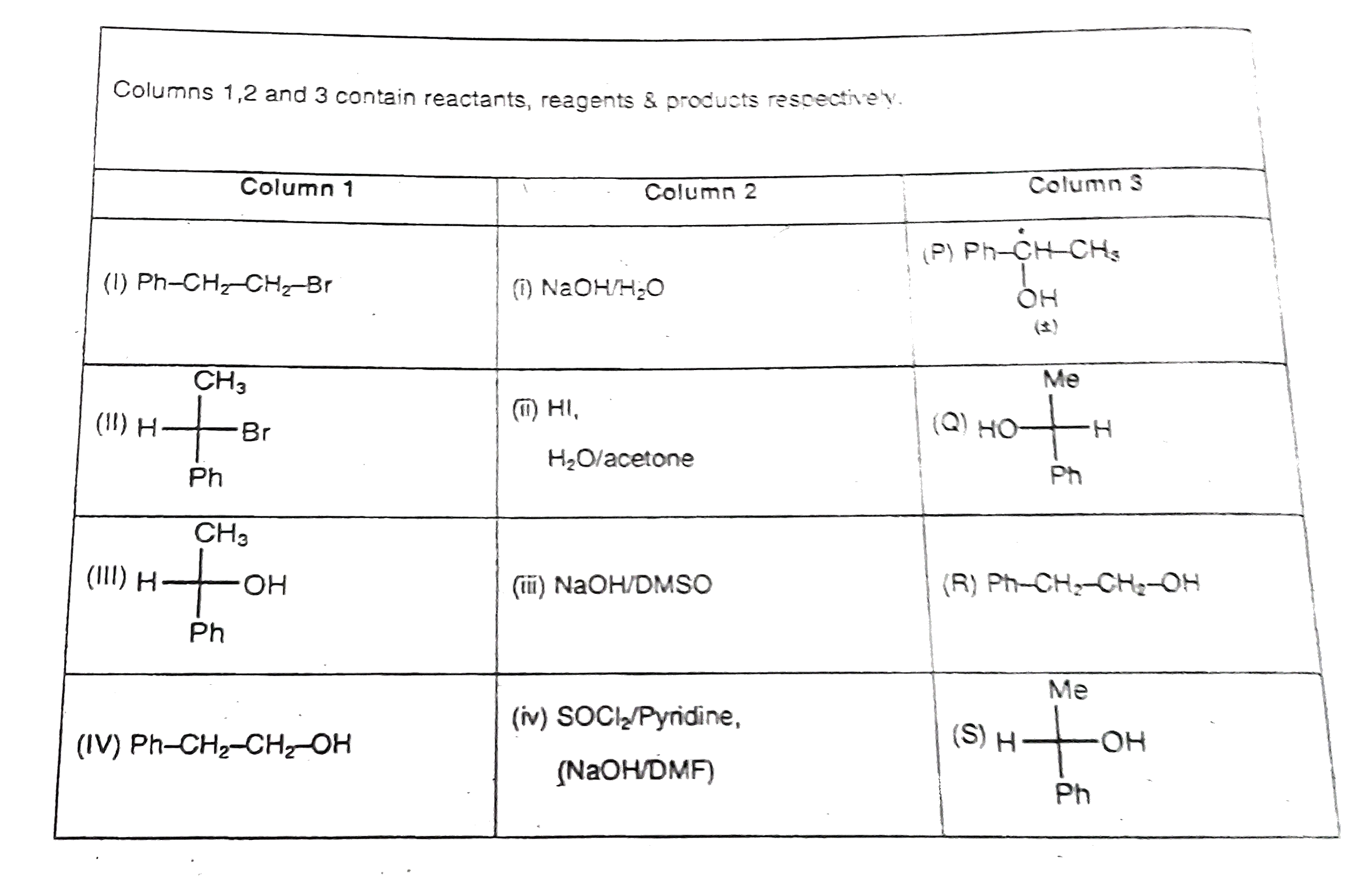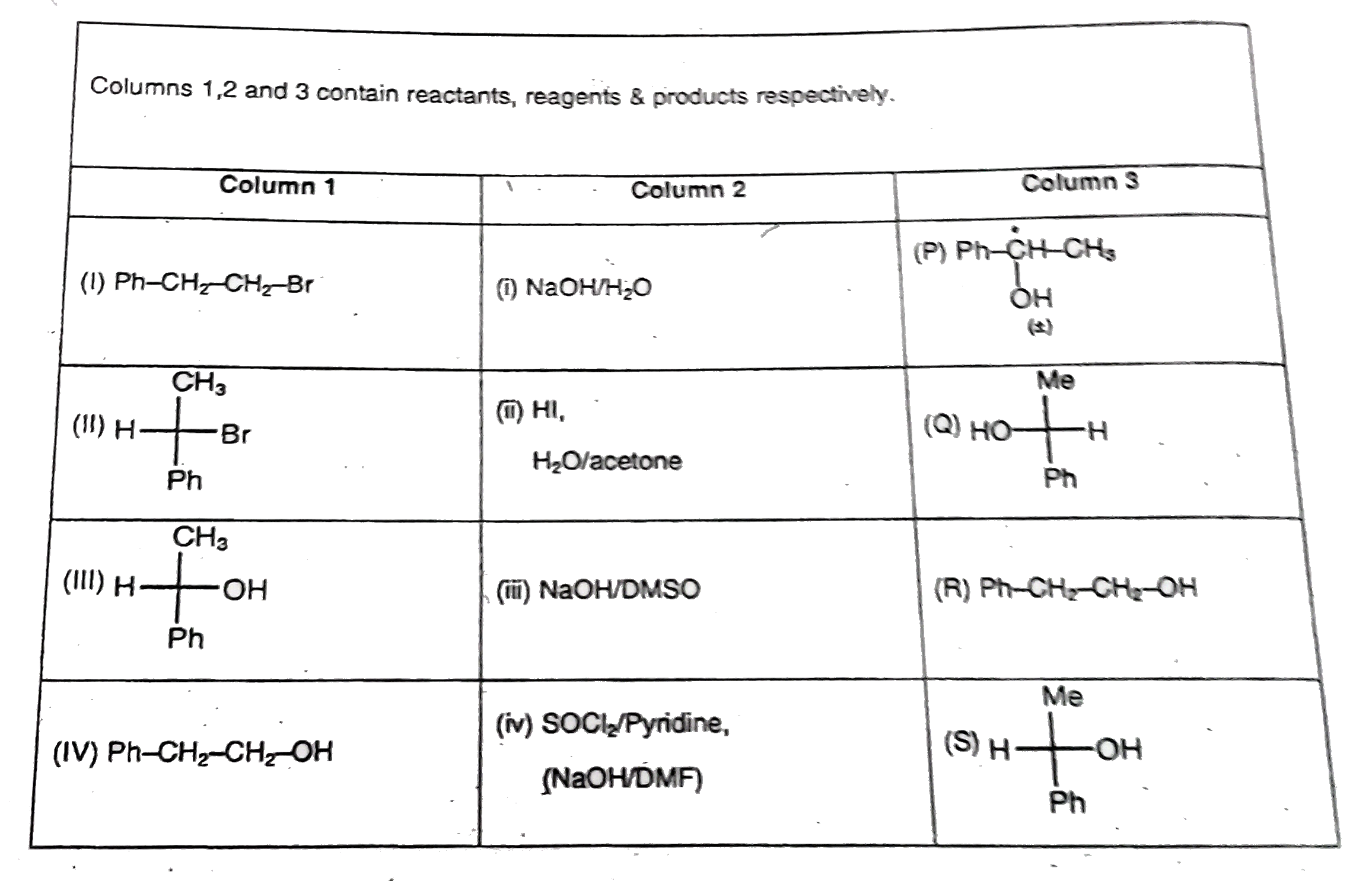tert-Butylbromide reacts with aq. NaOH by SN1 mechanism while n-butylbromide reacts by SN1 mechanism. Why?
In general, the SN1 reaction proceeds through the formation of carbocation. The tert-butyl bromide readily laus Br− ion to form table 3∘ carbocation.
Therefore, it reacts with aqueous KOH by SN1 mechanism as:
CH3−CH3∣C∣CH3−BrIonisation−−−−−→−BrslowCH3−CH3∣C+∣CH3tert-butyl carbocation(stable)
CH3−CH3∣C+∣CH3OH−−−→fastCH3−CH3∣C∣CH3−OHtert-Butyl alcohol
On the other hand, n-butyl bromide does not undergo ionization to form n-butyl carbocation (1∘) because it is not stable. Therefore, it prefers to undergo reaction by SN2 mechanism, which occurs in one step through a transition state involving nucleophilic attack of OH− lon from the back side with simultaneous expulsion of Br− ion from the front side.

SN1mechanism follows the reactivity order as 3∘>2∘>1∘ while SN2 mechanism follows the reactivity order as 1∘>2∘>3∘
Therefore, tert-butylbromide (3∘) reacts by SN1 mechanism while n-butylbromide (1∘) reacts by SN2 mechanism
Topper's Solved these Questions
- HALOALKANES AND HALOARENESBOOK - MODERN PUBLICATIONCHAPTER - HALOALKANES AND HALOARENESEXERCISE - NCERT examplar Problems (Matching Type Questions)
6 Videos
- HALOALKANES AND HALOARENESBOOK - MODERN PUBLICATIONCHAPTER - HALOALKANES AND HALOARENESEXERCISE - NCERT examplar Problems (Assertion and Reason Type Questions)
10 Videos
- HALOALKANES AND HALOARENESBOOK - MODERN PUBLICATIONCHAPTER - HALOALKANES AND HALOARENESEXERCISE - NCERT examplar Problems (Multiple Choice Questions (Type-II))
12 Videos
- GENERAL PRINCIPLES AND PROCESSES OF ISOLATION OF ELEMENTSBOOK - MODERN PUBLICATIONCHAPTER - GENERAL PRINCIPLES AND PROCESSES OF ISOLATION OF ELEMENTSEXERCISE - COMPETION FILE (Integer Type Numerical Value Type Questions)
5 Videos
- ORGANIC COMPOUNDS CONTAINING NITROGEN BOOK - MODERN PUBLICATIONCHAPTER - ORGANIC COMPOUNDS CONTAINING NITROGEN EXERCISE - UNIT PRACTICE TEST
5 Videos
Similar Questions
Knowledge Check

Only SN1 mechanism is observed in :A(I)(i)(R)B(II)(iii)(P)C(IV)(ii)(S)D(III)(ii)(P)
SN2 mechanism is observed in :A(I)(iii)(R)B(IV)(iv)(R)C(II)(iii)(Q)DallFor SN1 mechanism which of the following is correct ?
AInversion (100 %)BFormation of carbocationCNon-polar solventDElimination
Explain why
(a) the dipole moment of chlorobenzene is lower than that of cyclohexyl chloride ?
(b) alkyl halides, though polar, are immiscible with water ?
(c) vinyl chloride is unreactive in nucleophilic substitution reactions ?
(d) neopentyl bromide undergoes nucleophilic substitution reactions very slowly ?
(e) 3-bromocyclohexane is more reactive than 4- bromocyclohexane in hydrolysis with aqueous NaOH ? (f) tert butyl chloride reacts with aqueous sodium hydroxide by SN1 mechanism while n-butyl chloride reacts by SN2 mechanism.
(g) Grignard reagents should be prepared under anhydrous conditions ?
View SolutionThe following will react faster by SN1 mechanism
View SolutionWhich of the following reaction follows SN1 mechanism ?
View SolutionThe order of reactivity of halides towards SN 1 mechanism is
View SolutionWhich of the following reaction follows SN1 mechanism ?
View Solution
